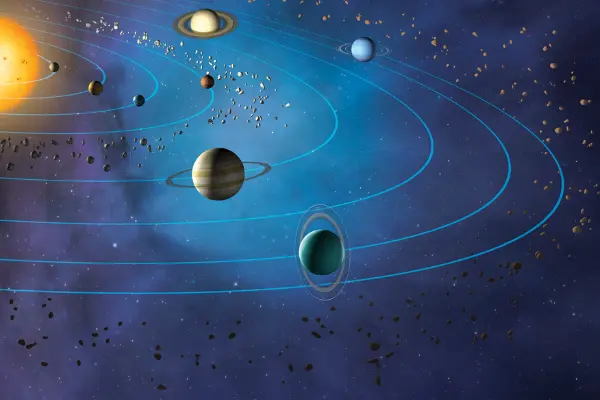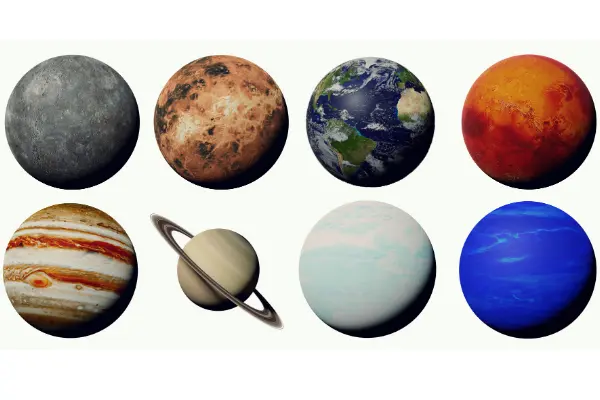What Is The Difference Between A Star And A Planet?
At night time, there are millions of tiny sparkling lights in the sky, some are stars and some others are planets.It is essential to know the key differences between Stars and Planets as they are both celestial bodies located in outer space.But how is it possible for someone looking at them to differentiate between two based on how they look and behave?
Key Takeaways:
- A star is a celestial object that emits its own light due to a chemical reaction at its core.
- A planet gets its glow from the sun’s light reflecting from the planet’s face.
- Stars twinkle but planets don’t.
- Planets are brighter than the stars.
- Stars orbit in a circular pattern around the North Star whereas planets move in a straight line.
Difference by Definition
A star is a celestial object that emits its own light due to a chemical reaction at its core. Some stars can appear brighter than others due to their size and their distance from earth.
A planet is a celestial body that orbits around the star in its solar system and gets its glow from the sun’s light reflecting from the planet’s face.
Difference in Physical Appearance

One of the easiest ways to tell if what you are looking at is a star – is the way that the light twinkles.
As the stars that we can see with the naked eye are many light years away and emit their own light, when their light eventually enters the different layers of the Earth’s atmosphere, it has bent and been disrupted, causing the star to twinkle.
Planets do not twinkle. They remain constant in their brightness and their overall appearance in the night sky.
If viewed through a telescope, planets may appear to “wiggle” along the edges.
Observing the relative brightness is another technique that can be used to tell the two apart. Planets are typically brighter than stars. The reason for differing brightness is because planets reflect the light of the sun, which is close to the planets, while the stars emit their own light.
Related
Difference In Their Movement

Another visible difference is whether or not the body is moving. All celestial bodies move, this is a known fact. However, stars and planets move in different manners.
Planets rise in the East and set in the West. They tend to follow a similar celestial path across our sky as the sun and moon.
If the celestial object you see appears to move in a more-or-less straight line across the night sky, it is most likely a planet.
While stars do move, they move differently in comparison to the planets in our solar system. Stars orbit in a circular pattern around the North Star.
Identify Them In An Ecliptic
Planets are always found along an imaginary belt across the night sky called the ecliptic.
The ecliptic is an imaginary band that planets move along. The difficulties in identifying the belt are clear to the untrained eye, but careful observation will help you find the location where celestial objects are gathered. While stars may also appear along this invisible belt, they should be distinguishable by their shimmering appearance.
Difference In Their Color

Not all the planets in our solar system have a specific colour, however the most prominent planets in the night sky can appear to have some sort of colouration.
It is recommended to use a telescope on a clear night if you are trying to distinguish the colour difference between the planets in the night sky. For most people, stars appear white to the naked eye.
Mercury is generally gray or somewhat brownish.
Venus appears pale yellow.
Mars typically varies between pale pink and bright red. The colour of Mars is affected by its brightness, which varies on a two-year cycle
Jupiter appears orange with white bands.
Saturn – pale gold in color.
Uranus and Neptune appear Pale blue, however, they are not visible to the naked eye
ABOUT US
We are a team of active amateur astronomers, here to help you with all your astronomy and science related needs – this is anything, from reviewing the latest telescopes to be released to talking about gravity and neurons. The Big Bang Optics was started because of our love for astronomy and to help others like us find the best telescope and accessories.
LEGAL DISCLAIMER
The Big Bang Optics is a participant in the Amazon Services LLC Associates Program, an affiliate advertising program designed to provide a means for sites to earn advertising fees by advertising and linking to Amazon.com. The Big Bang Optics also participates in affiliate programs with Clickbank and other sites. The Big Bang Optics is compensated for referring traffic and business to these companies.




